
Columnist Elsie Robinson had more than 20 million readers over three decades! Here at The Women’s Eye we are always looking to glean insights from accomplished storytellers, writers and journalists. Who hasn’t heard of Christiane Amanpour, Barbara Walters, Robin Roberts, Dear Abby (Abilgail Van Buren) to name but a few. But who has heard about Elsie?
Thanks to award-winning journalist Allison Gilbert and best-selling author Julia Scheeres, we became aware of this long-forgotten maverick, the highest paid and most widely read woman columnist in the US from 1921 until her death in 1956, with their book Listen, World!
“Many women who are like Elsie Robinson and those women who excelled in other professions, go under-recognized, go unrecognized. This book aims to correct that, at least for one incredible, remarkable woman.” Allison Gilbert
Why had we never heard about Elsie Robinson, who had 20 million loyal readers of her column? We wanted to find out more from the award-winning journalist Allison Gilbert about why she felt she had to tell Elsie’s story and Allison’s own thoughts on journalism…
EYE: Why is Elsie Robinson so important?

Photo: Courtesy The Bancroft Library
University of California at Berkeley
ALLISON GILBERT: Elsie was a trailblazer. She was someone who had America’s attention. Her popularity was enormous, even by today’s standards.
Elsie Robinson published at a breakneck pace: up to six days a week for more than 40 years, resulting in approximately 9,000 stories. At the height of her career, she had an audience of more than 20 million readers. To put that into perspective today, that’s double the number of current subscribers to The New York Times.
What Elsie wrote and what she had to say landed at a time where Americans were reading the paper. They also weren’t distracted by other forms of media. Elsie took on topics that were urgent and at the time were, of course, timely. They are also timeless because we are still talking about many of the same issues even today.
EYE: What were Elsie’s top issues?
ALLISON: She wrote initially about family and parenting. She stayed in a lane where women were allowed or permitted or given a platform, and then she expanded as she got her sea legs of being a journalist and a columnist and was given more and more latitude.
Elsie eventually expanded to write about gender inequality, feminism and capital punishment. She railed against racism, antisemitism. She talked about war, about poverty. These are issues, of course, that still resonate.
EYE: So how did she become forgotten?
ALLISON: There are many theories that we explore at the end of our biography, the first biography that’s been done of Elsie Robinson. We reference an exhaustive study by the National Women’s History Museum of why women are forgotten, including people like Elsie Robinson.
When you look at the American public school system, when you examine how social studies curriculums are built and what gets taught inside the classrooms from kindergarten all the way through 12th grade, of all the historical figures that are taught, only 24% are women. So, if you don’t teach women’s history, then we can’t learn women’s history, right?

EYE: How did you find her…even know about her?
ALLISON: After my mother died, my brother and I returned to our childhood home to pack up her belongings to get it ready for sale. Inside one of my mother’s books, she had hidden a piece of paper and it fell out, fluttering to the floor as I was packing up her books. It was a piece of onionskin paper.
On that piece of onionskin paper, she had retyped a poem, and it was attributed to someone named “Elsie Robinson.” I had no idea who Elsie Robinson was. The poem struck me as being the most well-meaning, tough love poem about grief I had ever read.
It was very indicative of the types of advice that Elsie would dole out to her readers across the country: tough love and to really own your own destiny, to own your own future. I was hooked. I had to know more about Elsie Robinson.
EYE: Did anything surprise you about her in your writing and in your research?
ALLISON: I absolutely loved learning about her moxie, her tremendous grit. I loved understanding that no door was opened for her, that she had to crack open and walk through every single door and earn each professional opportunity on her own.
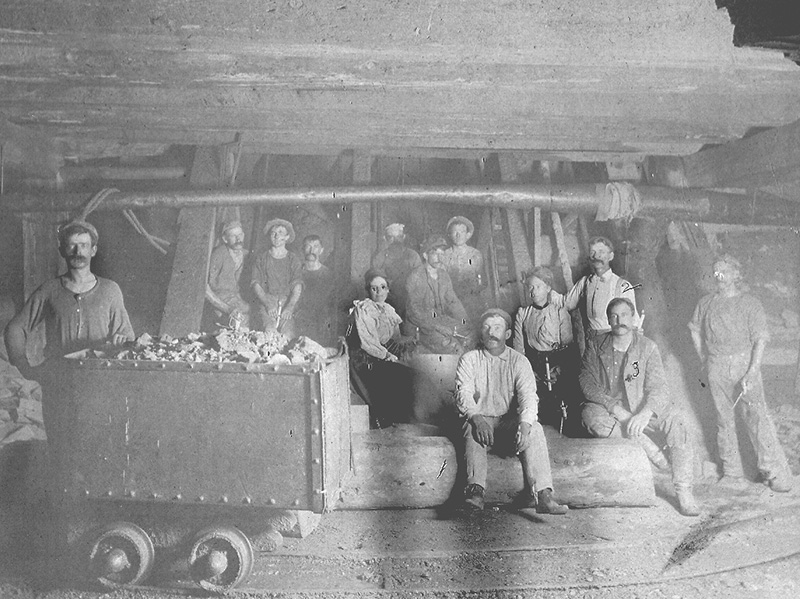
It’s really instructive to see the incredible fortitude of a woman who, back in the early 1900s, had a dream, a vision, and just went for it. I feel like that’s instructive for all of us today. She endured a gut-wrenching three years between 1915 and 1918 when she worked in a California gold mine.
She was the only woman in a sea of men trying to make ends meet. She was so poor, so desperate that she went to work 600 feet below the surface of the earth, risking her life and writing at night. Yet, she stayed true to her vision of what she wanted for herself, which was a bigger, better life.

EYE: Elsie illustrated many of her columns. Was she originally an artist?
ALLISON: She started out as a children’s illustrator. The reason why Elsie did that is because she had a son who was chronically ill his entire life. To entertain him, she would draw him pictures, and she would write stories for him. They were so good, so whimsical and imaginative that her big break came when she was hired to write a children’s column for the Oakland Tribune.
They eventually called it “Aunt Elsie’s Magazine.” She started there in 1918, and by 1919, they gave her a whopping eight pages. It was just extraordinary. Her success as Aunt Elsie really became the jet fuel that she needed to then write for those children’s parents.

Elsie pivoted and started writing for adults because she saw that being the next branding opportunity. She branded herself as “Aunt Elsie” and then she wanted to expand her reach. She was savvy and quite sharp when it came to her professional and business success.
EYE: By using her own illustrations, do you think that made Elsie’s columns more popular?
ALLISON: I believe her editorial and political cartoons are a big reason why she became the most well-read woman columnist in the United States. She became the highest paid woman writer in the entire William Randolph Hearst media empire.
Still to this day, it is incredibly rare for a writer to also illustrate her own columns. Usually, writers write and artists draw, and artists are hired to illustrate a writer’s column. It’s really rare for someone to do both.
If you weren’t inclined to read every sentence of an Elsie Robinson Listen, World! column, you got her message because you saw her political and editorial cartoons. They were sharp; they were witty; they were provocative.

EYE: Do you have a favorite illustration and column?
ALLISON: One of my favorites is on gender inequality. What I love so much about this cartoon is that it’s so very simple yet so very powerful.
Elsie Robinson’s editorial cartoons and columns reveal that she was pushing for women’s rights more than a decade before Gloria Steinem was born.
Here’s proof of her incredible capacity to own this topic, own this subject matter in a way that we often associate with later feminists. Elsie Robinson was taking on these issues very early on, and it’s stirring.
EYE: Is there an adjective or two that come to mind just to describe Elsie?

ALLISON: Driven and empathetic.
EYE: Why empathetic?
ALLISON: Empathetic because she thought that no person’s struggles were special. She thought in her words that they were all common bread, and that if we were all to take a look at each other’s lives, we would see far more similarities than anything else. That’s radical empathy.
EYE: What do you think Elsie would think of journalism today?
ALLISON: I think that she would feel exceptionally excited that there are more avenues available to marginalized voices than there have ever been. And to her, that would be gratifying.
EYE: What do you think she would want women journalists in particular to take away from her story?
ALLISON: I don’t think it’s really about women journalists in particular, and I don’t think it’s really about women in particular. I think her lessons are much more broad and much more applicable to everyone than just a narrow sphere.
What I feel is the most dramatic lesson of her life is that no matter how incredibly hard and challenging all of our paths are, there is a way through, a way around.
Elsie came from nothing. She had no contacts; she had no money. She had a vision and she had passion; she had doggedness. When doors were slammed in her face, which they were, she kept going.
EYE: In your other books, you’ve covered a range of topics from grief, to dying, to 911, to cancer, and now this biography. Is there a common takeaway with all of these subjects?
ALLISON: I think we can gain invaluable support when we are exposed to stories of other people’s similar experiences. What I mean by that is when you look at biography, and I’m including Listen, World! in that group, Elsie Robinson suffered tremendous loss in her life.
So, when you read a book about somebody else’s grief experiences, you can learn about how you might want to manage your own grief and loss. There are lessons to be learned by seeing how other people cope and heal and journey forward.
I would love biography to be considered more readily when it comes to the types of literature that people can turn to when they are grieving. We turn to memoir, autobiography and self-help books. All of them, of course, have their rightful place and should be looked to.
But I also think what I would love for this biography to offer is yet another way, in another path, to find recognition, validation and healing.

EYE: Writing is definitely not an easy exercise. Is it something you always enjoyed or pursued and were good at?
ALLISON: I am a late-comer to the world of book writing. For more than 20 years, I was a television news writer, a television news producer, and loved that world.
It was because of 911 that I began to slowly shift from working in a newsroom to becoming a writer, to becoming an author. It’s been a slow pivot, and it’s been an exceptionally rewarding one.
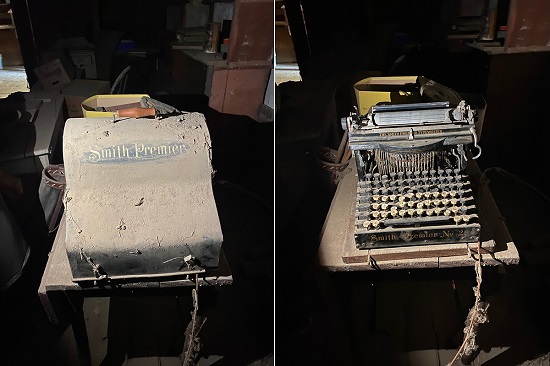
EYE: Thank you, Allison, for your time and thoughts at your very busy time. Listen World! is an inspiring story for journalists and non-journalists alike! Much success to you and for all your undertakings!
Some links in this post may be “affiliate links,” meaning TWE receives a small commission (at no extra cost to you) if you use that link to make a purchase.
Allison’s social media:
Website: allisongilbert.com
Twitter: @agilbertwriter
Facebook: @agilbertwriter
Instagram: @agilbertwriter
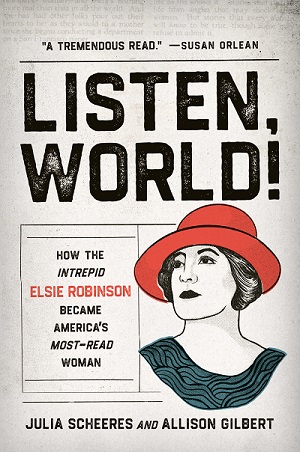
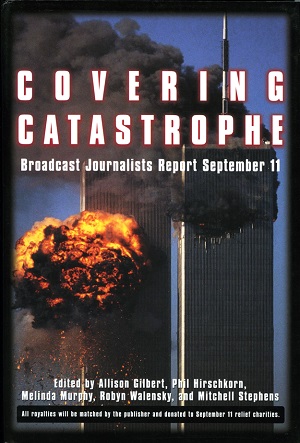
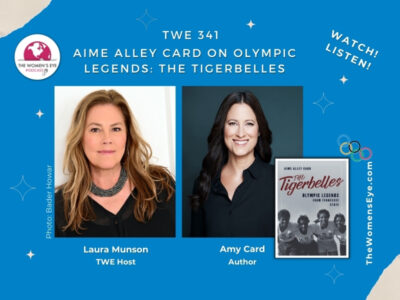


Leave a Reply